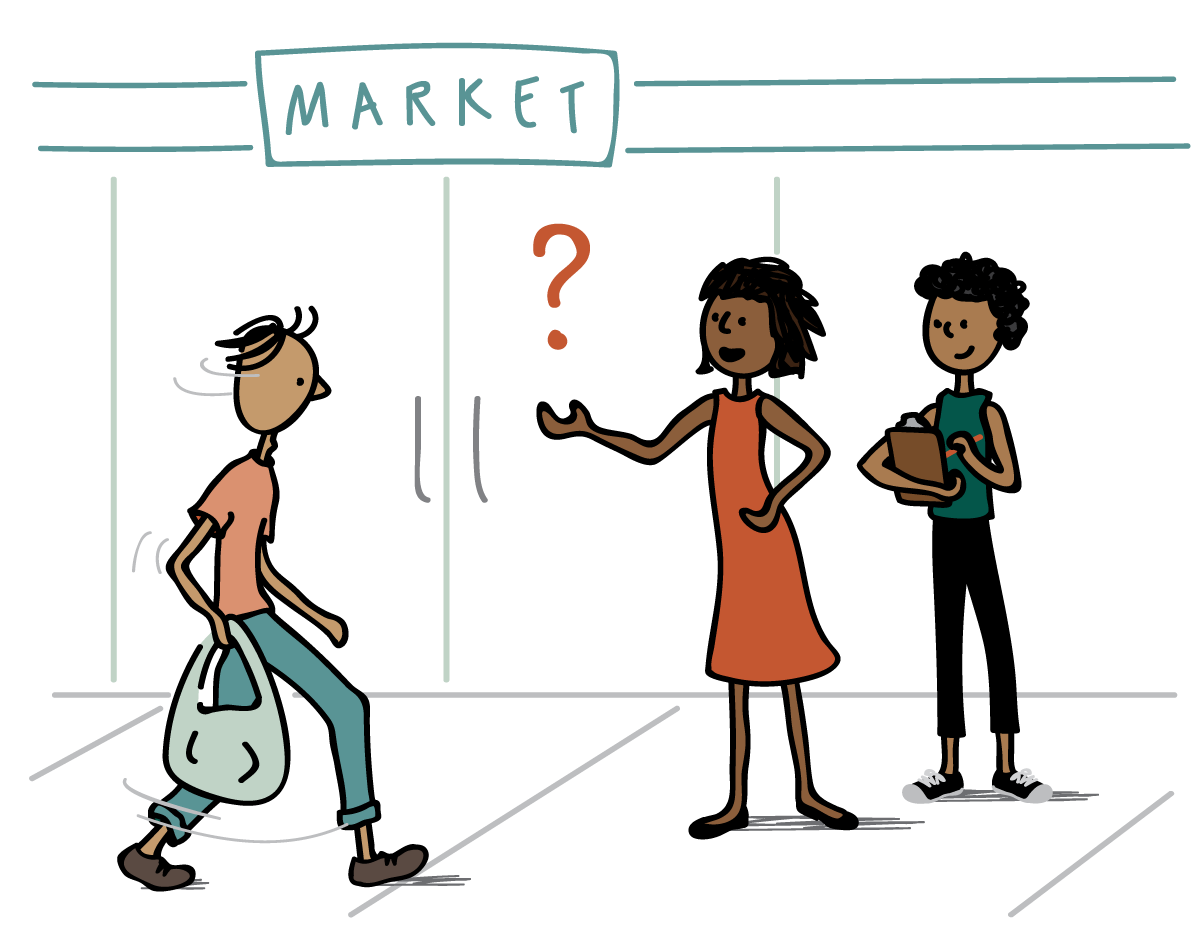Person on the Street

Updated: February 13, 2017
Purpose
Practice co-creation.



participants
Muscles

Listening actively

Working inclusively

Working iteratively

Asking for help

Synthesizing / validating
Steps
- Pick a big question that’s relevant to both you and your partner. Reframe it so that it’s about your best personal experiences. For example, if your question is, “What is leadership?”, you could reframe it into, “Describe a specific example where you experienced great leadership (either your own or others). What made it so great?”
- Take one minute to think about your answers individually and in silence.
- Take five minutes each to share your answers with each other.
- Using a shared whiteboard or notes (e.g. Google Docs), draft an answer to your big question based on your personal stories. If you’re working in pairs, take 10-15 minutes. If you’re working with a bigger group, leave more time to incorporate everyone’s stories.
- Find a “person on the street,” and ask her / him the same experiential questions. If you’re working face-to-face, literally find someone nearby — could be a stranger. If you’re working remotely, you can do this separately as homework, or you can call someone together. Each of you should interview at least one person. (10min / person on street)
- Revisit your big question with your partner. Revise your answer based on what you learned from your interviews. (10min)
Design Notes
There’s a lot going on in this one exercise (which is why it’s one of my favorites), but at its core, it’s an exercise in inclusion and iteration.
We often hold ourselves back when it comes to seeking other people’s thinking. We want to do our own thinking first, or we want to make sure we’re “prepared.”
The problem is that the longer you wait, the less valuable the information you get back.
Talking to other people only incorporates multiple perspectives early, when it can make the most difference.
It tests your assumptions quickly, preventing you from going too far down a rabbit hole.
Finally, everyone feels ownership over the work, because everyone has contributed to the creation.
Seeking others is so simple in theory — literally find a person on the street — but it’s extremely difficult in practice. As with all of these exercises, you can overcome this through practice and repetition.